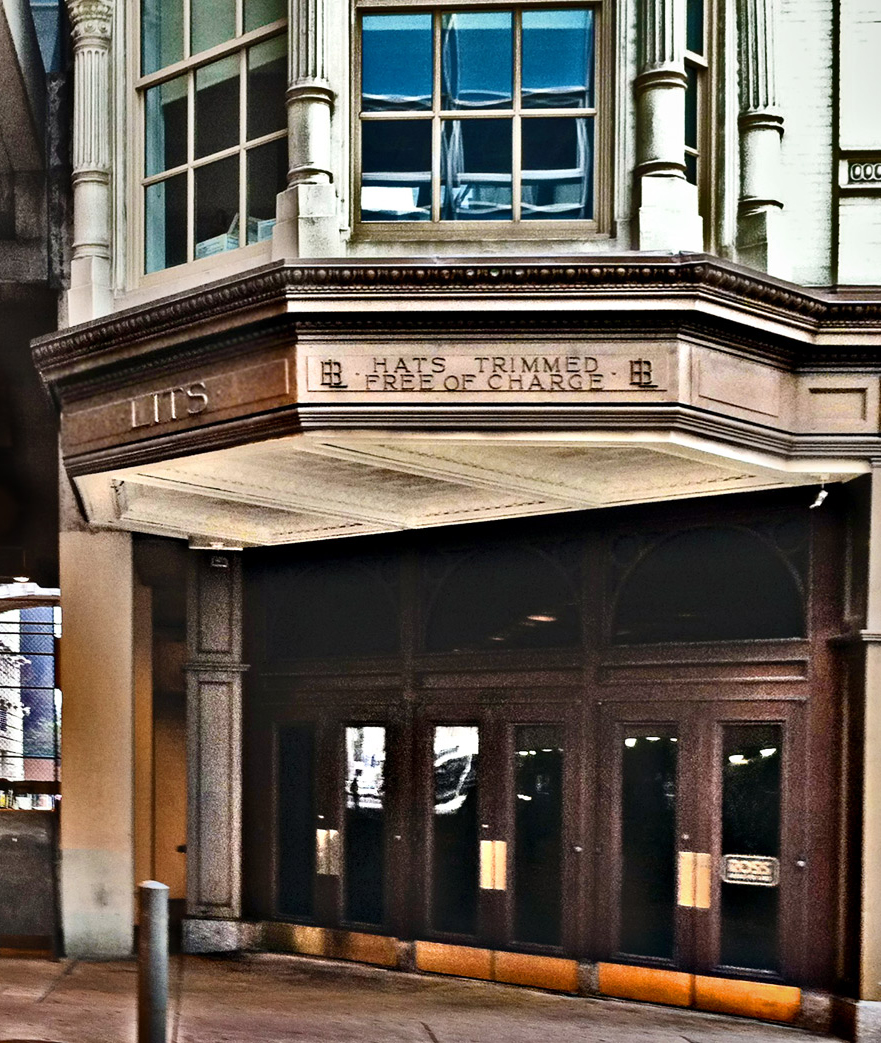The old Lit Brothers department store (built and expanded between 1859 and 1918) on Philadelphia’s Market Street has a sign over one of its corner entrances, that has always puzzled me. HATS TRIMMED FREE OF CHARGE is embossed into the metal fascia of the canopy. It’s the only such sign. But whose hats, men or women? Did it refer to a hat bought in the store, or was it—as I suspected—an enticement to walk in and get your hat “trimmed,” whatever that meant? And why was this procedure so important—and so common—that it had to be emblazoned over the store entrance? The Internet has many references to the sign, but I couldn’t find an explanation. The closest I got was an article on how Stetson hats were made (John B. Stetson, a native of New Jersey, not Texas, established his factory in Philadelphia in 1865). The original Stetsons were made out of felt composed of beaver fur. The last step in the manufacturing process was to sand the blocked felt to remove excess hairs. Did such felt hats require periodic sanding and “trimming.” Perhaps.


A definitive answer can likely be found at thefedoralounge.com a site for hat enthusiasts.
I’m not a hat nut myself, but a few years ago I was looking for a waterproof hat to wear here in Oregon and I stumbled on the site. I ended up choosing an Akubra “Cattleman” made out of rabbit-fur felt in Australia, where they have a number of excess rabbits. Along the way I discovered that felt hats are made with dome-shaped crowns which are then steamed and pinched or “bashed” into the desired shape — fedora, pork pie, etc. The bands or ribbons are added, all to suit the customer. I suspect that hat trimming was a service department stores offered to finish out the customers’ new hats with a bespoke bash, ribbon, and feather to suit.
The Akubra turns out to be an excellent, quality hat which, if not absolutely waterproof is close as dammit.
But wouldn’t you get the ribbon etc. when you bought a hat? The presence of the sign suggests to me that trimming was something done to a hat–perhaps periodically–after it had been worn. I did read that Lit Brothers, despite the name, was founded by Rachel Lit in 1891. The store was a women’s clothing shop. With her two brotjers, she grew the business into a large department store. She was originally a milliner, so perhaps the sign had nothing to do with men’s hats at all and was simply an hommage à Rachel.
You’re probably right. Women’s fashions change almost continuously while men’s not so much. Bringing an expensive hat back to the shop for updating was likely routine. There’s a milliner character in one of Miyazaki’s films who performs this service. In my (very) brief foray into men’s hat world I saw no mention of hats needing occasional trimming, though people will change out the band or rebash the crown or reshape the brim. I trimmed an inch off my hat’s too-wide brim myself, but I’m a lifelong woodworker with hardwired diy and can’t help myself. I doubt that the sign refers to that kind of trimming.
I still think men’s hat purchases once regularly involved some customization at the retail shop. Here’s a clip of hats getting a custom bash at a shop:
https://www.youtube.com/watch?v=q-pGgrXI3uI